The Art of Mjolnir: From Myth to Modern Masterpiece
Share
In the realm of mythology and modern pop culture, few artifacts carry the weight of history, symbolism, and artistic interpretation quite like Mjolnir, the legendary hammer of Thor, the Norse god of thunder. This iconic weapon has transcended its mythological origins to become a symbol of strength, worthiness, and heroism in both ancient lore and contemporary art. Here's an exploration into the art of Mjolnir, from its ancient representations to its modern-day interpretations.
Mythological Roots
Mjolnir's story begins in the rich tapestry of Norse mythology. Forged by the dwarves Brokkr and Eitri at the behest of Loki, who was trying to outdo the creations of other dwarves, Mjolnir was originally crafted to be the ultimate weapon for Thor. The hammer was imbued with magical properties, including the ability to return to Thor's hand after being thrown, control over the weather, and the power to sanctify or bless. In mythology, Mjolnir is often depicted as a short-handled hammer, which adds an element of challenge in Thor's use of it, requiring both strength and skill.
Viking Age Artistry
During the Viking Age, Mjolnir was not just a weapon but also a symbol of protection and faith. Archaeological finds have revealed numerous Mjolnir pendants, often made from materials like iron, silver, or amber, which were worn as amulets. These artifacts, found across Scandinavia, showcase the hammer in various artistic styles, from simple, geometric shapes to more intricate designs with runic inscriptions or other Norse symbols. This shows Mjolnir was not only a tool of war but a cultural emblem, embodying the protective and benevolent aspects of Thor.
Medieval to Renaissance Imagery
In medieval and Renaissance art, Thor and Mjolnir appear in illustrations, tapestries, and carvings, often with a Christian overlay, where Thor might be depicted more as a figure of folklore than a god. These artistic representations often borrowed from the visual vocabulary of Hercules, with Mjolnir sometimes resembling a club or a more ornate hammer, reflecting the era's fascination with classical mythology and its integration with Norse sagas.
Modern Interpretations
Comic Books and Movies: The Marvel Comics version of Mjolnir, introduced in 1962, has perhaps the most recognized modern depiction. Designed by Jack Kirby, this version of the hammer has a square head with a short handle wrapped in leather, symbolizing both Thor's power and his worthiness enchantment. The Marvel Cinematic Universe (MCU) further popularized this image, with each film adding nuances to Mjolnir's design, from its battle-worn appearance in "Thor: Ragnarok" to its reconstitution in "Thor: Love and Thunder."
Fan Art and Cosplay: The internet age has seen Mjolnir become a staple in fan art and cosplay. Artists on platforms like DeviantArt and Reddit share their versions of Mjolnir, ranging from hyper-realistic to
stylized, often merging modern aesthetics with traditional Norse elements. Cosplayers meticulously craft replicas, capturing the hammer's essence in their costumes, celebrating both the myth and the comic book hero.
Commercial Art: Mjolnir's iconic status has led to its inclusion in various commercial arts, from wall art and posters available on sites like Redbubble to merchandise like jewelry, keychains, and even tattoos. These pieces often play with the hammer's symbolism, blending it with other cultural motifs or personal touches.
Cultural Impact and Symbolism
Mjolnir isn't just an art subject; it's a symbol of strength, protection, and the hero's journey. Its depiction in art has evolved to represent not only Thor's physical might but also the moral and ethical qualities one must possess to wield such power. In contemporary culture, Mjolnir represents the idea that true strength comes from within, a theme that resonates across various artistic mediums.
Conclusion
The art of Mjolnir is a journey through time, from the ancient amulets of Viking warriors to the digital canvases of today's artists. Each depiction adds layers to its legend, making Mjolnir not just a hammer but a profound symbol of human aspiration towards heroism and virtue. As we continue to explore and reinterpret this artifact, it remains a testament to the enduring power of myth in shaping our artistic expressions and cultural identities.
Go shop at Ancientreasures.com's Mjolnir collection right here.
